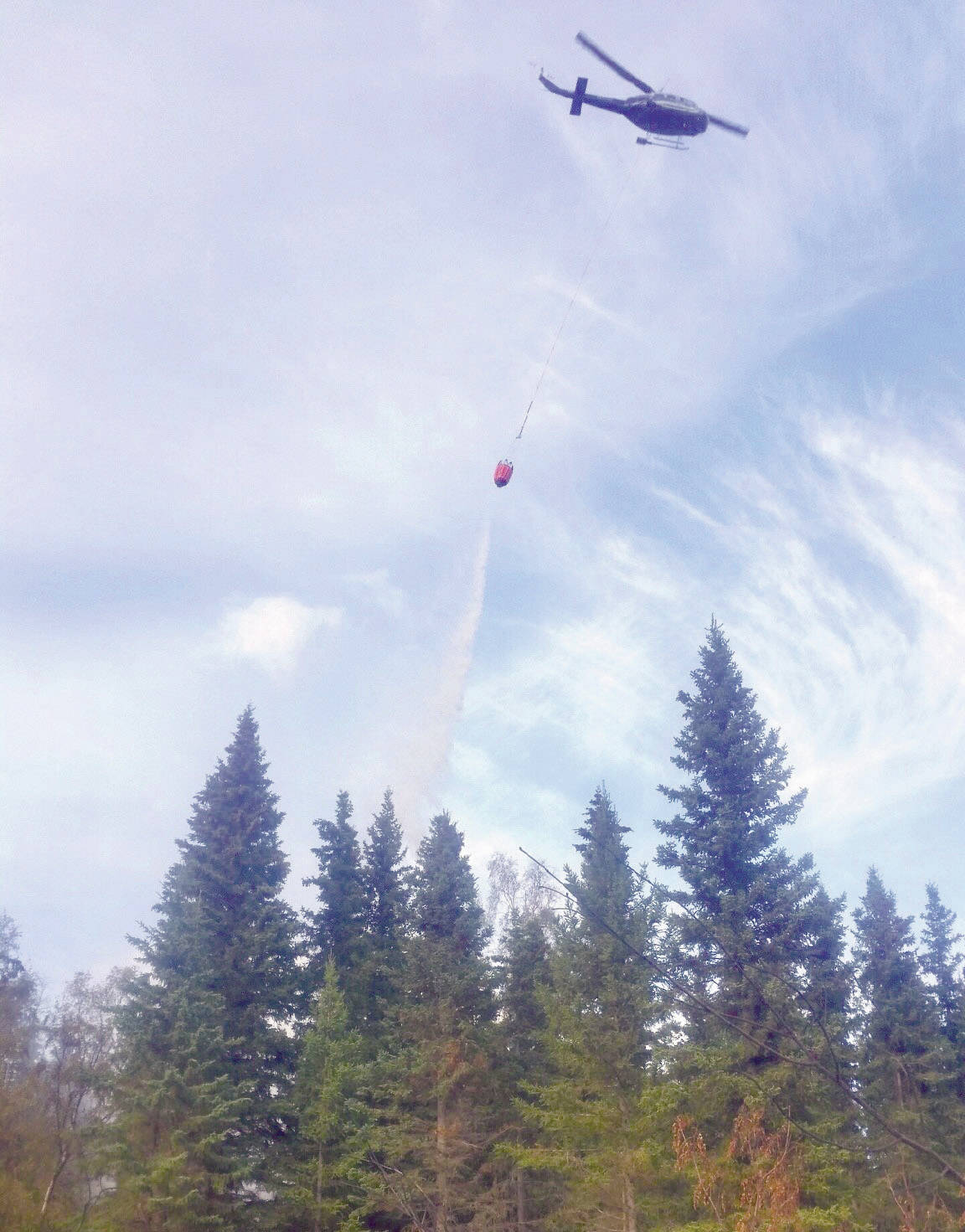A HECM, or helicopter crewmember, performs an essential role in ensuring the safety and success of aviation operations during a wildland fire. To manage wildland fires in the United States, we rely heavily on aviation for planning and operations. In addition to the aircraft and pilot, it takes a lot of ground support to get the “ships” in the air.
Helicopter crewmembers remain on the ground for their primary job duties, but they also need to be ready to fly at any time. My first flight in a helicopter occurred during the Swan Lake Fire. Flying to and landing on a mountaintop to establish a radio communications tower is something I’ll never forget.
To achieve the necessary credentials of a qualified HECM, according to the National Wildfire Coordinating Group, a combination of classroom and field coursework of 50-plus hours must be completed. Additionally, a HECM task book is opened.
Upon demonstrating proficiency as a trainee, the student will be evaluated by a qualified HECM in order to complete the task book certification.
Required training includes a current wildland firefighter red card, transportation of hazardous materials course and the completion of an S-271 helicopter crewmember course. I became a Type 2 wildland firefighter in May 2019, received HECM training during the S-271 course at Campbell Field in Anchorage, then completed the task book during the Swan Lake Fire.
Many different types of aircraft were used during the Swan Lake Fire, including a variety of Bell helicopters, a K-Max helicopter and Canadair Super Scoopers, to name a few.
The Bell and K-Max Helicopters were used primarily for bucket drops, which consisted of hovering over a water feature (like a lake, river, pond, or tank) with a long line attached to a bucket, dipping the bucket in the water to fill it up, flying to the fire and releasing the contents of the bucket.
The Canadair Super Scooper planes fly low over a larger water source, just penetrating the surface. These planes can accumulate 1,600 gallons of water in just 12 seconds in the belly of the plane, which can then be dispersed over a larger area of the fire. All of these aircraft proved valuable in the efforts to suppress the Swan Lake Fire.
During my first assignment, I was stationed at a heli-spot near the fire. A heli-spot is a natural or improved takeoff and landing area intended for temporary or occasional helicopter use. As the ship approached, I communicated with pilots on the radio and coordinated with them to land at the heli-spot so that I could hook up the bucket.
This bucket held approximately 500 gallons and was remotely controlled by the pilot to release the contents on the fire. The remote-controlled bucket is essential, and when being connected to the belly of the ship needs to be double-checked by the HECM to ensure it is functioning properly.
As the pilot lands or lifts off, the HECM keeps a watchful eye on the surrounding airspace and immediately notifies the pilot of any aerial hazards. These hazards might include other aircraft, birds or an increase in wind-weather activity.
Another HECM assignment was located at the Division of Forestry heli-base in Soldotna. There I assisted in the safety protocol for fueling aircraft, kept an eye on the airspace during ingress and egress, performed visual inspections of the takeoff and landing sites for foreign objects and debris that might have the potential to become hazardous if washed up in the rotors, and provided preflight crew and passenger safety briefings.
A safety briefing is required before any passengers can board the ship. This briefing includes information regarding the dos and don’ts when around an aircraft to ensure a safe flight, how to properly use the seat belts and flight harnesses, locations of the survival gear, first aid kit and fire extinguisher, and fuel and electronic shut-off switches in the event of a hard landing.
As the fire became more complex and more resources were being called to the Swan Lake Fire, the heli-base needed to expand to allow for additional aircraft. A new heli-base was established to accommodate four helicopters, a radio command post, a refueling truck and additional HECMs. This heli-base was located closer to the fire and allowed the helicopters located at the Division of Forestry heli-base to work on other, concurrent fires.
In addition to suppressing fires with bucket work, ships also assist in transporting gear, equipment, personnel and supplies to remote fire camps. Manifesting, or performing load calculations, is essential to the safety of all personnel on the fire.
All helicopters have an allowable load limit, which can be carried either in the fuselage or by the cargo net attached by a long line. Load calculations must be performed by an HECM before every flight.
The information is then relayed to the pilot and command post to ensure the ship is safe to fly based on the weight of passengers and gear in the fuselage, fuel on board and cargo in the net. Additionally, any hazardous materials on board must be communicated to the pilot and properly packaged to ensure the safety of everyone on the ground as well as in the air.
A HECM performs a critical role in aviation operations, and aviation provides a valuable resource in suppressing wildfires. During the Swan Lake Fire, I was exposed to many different facets of using aviation for wildland firefighting. I look forward to expanding my training and knowledge as an HECM. I have also been inspired to begin studying for my private pilot’s license.
Stay healthy, follow local burn guidelines and have a great summer!
Mike McNulty is a Trail Crew Leader and collateral duty wildland firefighter at the Kenai National Wildlife Refuge. Find more Refuge Notebook articles (1999–present) at https://www.fws.gov/refuge/Kenai/community/refuge_notebook.html.
By MIKE McNULTY
Kenai National Wildlife Refuge

